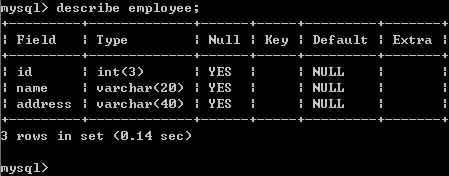自己實現一個資料庫連線池
儘管很多Web伺服器廠商已經在伺服器內嵌入了資料池的實現,比如Tomcat的DBCP資料庫連線池.不過由於其內部的機制開發者並不熟悉.從而出現了Bug不知道該如何去解決.
一直以來我也不喜歡用第三方的開發包,所以就自己參考著一本書實現了一個資料庫連線池.並且可擴充性也可以.更重要的是自己寫的資料庫連線池.即便出現了Bug也比較容易找出來.
下面是資料庫連線池的程式碼,提供了幾個介面供程式呼叫.
import java.io.FileWriter;
import java.io.IOException;
import java.io.InputStream;
import java.io.PrintWriter;
import java.sql.Connection;
import java.sql.Driver;
import java.sql.DriverManager;
import java.sql.SQLException;
import java.util.Date;
import java.util.Enumeration;
import java.util.Hashtable;
import java.util.Properties;
import java.util.StringTokenizer;
import java.util.Vector;
public class DBConnectionManager {
static private DBConnectionManager instance;
static private int clients;
private PrintWriter log;
private Vector drivers = new Vector();
private Hashtable pools = new Hashtable();
static synchronized public DBConnectionManager getInstance() {
if(instance == null){
instance = new DBConnectionManager();
}
clients++;
return instance;
}
private DBConnectionManager(){
init();
}
private void init(){
System.out.println("init 1");
InputStream is = getClass().getResourceAsStream("db.properties");
System.out.println("init 2");
Properties dbProps = new Properties();
try{
dbProps.load(is);
}catch(Exception e){
System.err.println("不能讀取屬性檔案."+"請確保db.properties在CLASSPATH指定的路徑中");
return;
}
String logFile = dbProps.getProperty("logfile","DBConnectionManager.log");
System.out.println("the logFile is :"+logFile);
try{
log = new PrintWriter(new FileWriter(logFile,true),true);
}catch(IOException e){
System.err.println("無法開啟日誌檔案:"+logFile);
log = new PrintWriter(System.err);
}
System.out.println("init 3");
loadDrviers(dbProps);
createPools(dbProps);
}
private void createPools(Properties props){
Enumeration propNames = props.propertyNames();
while(propNames.hasMoreElements()){
String name = (String)propNames.nextElement();
if(name.endsWith(".url")){
String poolName = name.substring(0,name.lastIndexOf("."));
String url = props.getProperty(poolName+".url");
if(url == null){
log("沒有為連線池"+poolName+"指定URL");
continue;
}
String user = props.getProperty(poolName+".user");
String password = props.getProperty(poolName+".password");
String maxconn = props.getProperty(poolName+".maxconn","0");
int max;
try{
max = Integer.valueOf(maxconn).intValue();
}catch(NumberFormatException e){
log("錯誤的最大連線數限制:"+maxconn+".連線池:"+poolName);
max = 0;
}
DBConnectionPool pool = new DBConnectionPool(poolName,url,user,password,max);
pools.put(poolName,pool);
log("成功建立連線池"+poolName);
}
}
}
private void loadDrviers(Properties props){
String driverClasses = props.getProperty("drivers");
StringTokenizer st = new StringTokenizer(driverClasses);
while(st.hasMoreElements()){
String driverClassName = st.nextToken().trim();
try{
Driver driver = (Driver)Class.forName(driverClassName).newInstance();
DriverManager.registerDriver(driver);
drivers.addElement(driver);
log("成功註冊JDBC驅動程式"+driverClassName);
}catch(Exception e){
log("無法註冊JDBC驅動程式:"+driverClassName+",錯誤:"+e);
}
}
}
public void freeConnection(String name,Connection con){
DBConnectionPool pool = (DBConnectionPool)pools.get(name);
if(pool != null){
pool.freeConnection(con);
}
}
public Connection getConnection(String name){
DBConnectionPool pool = (DBConnectionPool)pools.get(name);
if(pool != null){
return pool.getConnection();
}
return null;
}
public Connection getConnection(String name,long time){
DBConnectionPool pool = (DBConnectionPool)pools.get(name);
if(pool != null){
return pool.getConnection(time);
}
return null;
}
private void log(String msg){
log.println(new Date()+":"+msg);
}
public void log(Throwable e,String msg){
log.println(new Date()+":"+msg);
e.printStackTrace();
}
public synchronized void release(){
if(--clients != 0){
return;
}
Enumeration allPools = pools.elements();
while(allPools.hasMoreElements()){
DBConnectionPool pool = (DBConnectionPool)allPools.nextElement();
pool.release();
}
Enumeration allDrivers = drivers.elements();
while(allDrivers.hasMoreElements()){
Driver driver = (Driver)allDrivers.nextElement();
try{
DriverManager.deregisterDriver(driver);
log("撤消JDBC驅動程式"+driver.getClass().getName()+"的註冊");
}catch(SQLException e){
log(e,"無法撤消下列JDBC驅動程式的註冊:"+driver.getClass().getName());
}
}
}
public class DBConnectionPool {
private int checkedOut;
private Vector freeConnections = new Vector();
private int maxConn;
private String name;
private String password;
private String URL;
private String user;
public DBConnectionPool(String name,String URL,String user,String password,int maxConn){
this.name = name;
this.URL = URL;
this.user = user;
this.password = password;
this.maxConn = maxConn;
}
public synchronized void freeConnection(Connection con){
freeConnections.add(con);
checkedOut--;
notifyAll();
}
public synchronized Connection getConnection(){
Connection con = null;
if(freeConnections.size() > 0){
con = (Connection)freeConnections.firstElement();
freeConnections.removeElementAt(0);
try{
if(con.isClosed()){
log("從連線池"+name+"刪除一個無效連線");
con = getConnection();
}
}catch(SQLException e){
log("從連線池"+name+"刪除一個無效連線");
con = getConnection();
}
}else if(maxConn == 0||checkedOut < maxConn){
con = newConnection();
}
if(con != null){
checkedOut++;
}
return con;
}
public synchronized Connection getConnection(long timeout){
long startTime = new Date().getTime();
Connection con;
while((con = getConnection()) == null){
try{
wait(timeout);
}catch(InterruptedException e){}
if((new Date().getTime() - startTime) >= timeout){
return null;
}
}
return con;
}
public synchronized void release(){
Enumeration allConnections = freeConnections.elements();
while(allConnections.hasMoreElements()){
Connection con = (Connection)allConnections.nextElement();
try{
con.close();
log("無法關閉連線池"+name+"中的連線");
}catch(SQLException e){
log("無法關閉連線池"+name+"中的連線");
}
}
freeConnections.removeAllElements();
}
private Connection newConnection(){
Connection con = null;
try{
if(user == null){
con = DriverManager.getConnection(URL);
}else{
con = DriverManager.getConnection(URL,user,password);
}
log("連線池"+name+"建立一個新的連線");
}catch(SQLException e){
log("無法建立下列URL的連線:"+URL);
return null;
}
return con;
}
}
}
以下是一個測試用的Servlet例子:
import java.io.IOException;
import java.io.PrintWriter;
import java.sql.Connection;
import java.sql.ResultSet;
import java.sql.ResultSetMetaData;
import java.sql.SQLException;
import java.sql.Statement;
import javax.servlet.ServletConfig;
import javax.servlet.ServletException;
import javax.servlet.http.HttpServlet;
import javax.servlet.http.HttpServletRequest;
import javax.servlet.http.HttpServletResponse;
public class TestServlet extends HttpServlet {
private DBConnectionManager connMgr;
public void destroy() {
connMgr.release();
super.destroy();
}
public void service(HttpServletRequest request, HttpServletResponse response)
throws ServletException, IOException {
response.setContentType("text/html;charset=gb2312");
PrintWriter out = response.getWriter();
Connection con = connMgr.getConnection("mysql");
if(con == null){
out.println("不能獲取資料庫連線.");
return;
}
ResultSet rs = null;
ResultSetMetaData md = null;
Statement stmt = null;
try{
stmt = con.createStatement();
rs = stmt.executeQuery("SELECT * FROM EMPLOYEE");
md = rs.getMetaData();
out.println("
職工資料
");while(rs.next()){
out.println("
");
for(int i = 1;i < md.getColumnCount();i++){
out.print(rs.getString(i)+",");
}
}
stmt.close();
rs.close();
}catch(SQLException e){
e.printStackTrace();
}
connMgr.freeConnection("mysql",con);
}
public void init(ServletConfig conf) throws ServletException {
super.init(conf);
System.out.println("servelt init start");
connMgr = DBConnectionManager.getInstance();
System.out.println("servelt init over");
}
}
下面是資料庫連線池的配置檔案:
drivers=com.mysql.jdbc.Driver
logfile=d://log//log.txt
mysql.maxconn=2
mysql.url=jdbc:mysql://localhost/test?user=root&password=sunfeng&useUnicode=true&characterEncoding=gb2312
mysql.user=root
mysql.password=sunfeng
以下是資料庫裡面的資料(我用的是MySQL資料庫):
以下是最終的執行結果:
Trackback: http://tb.blog.csdn.net/TrackBack.aspx?PostId=1394711
相關文章
- 資料庫連線池實現資料庫
- JDBC資料庫連線池實現JDBC資料庫
- 如何用C++自己實現mysql資料庫的連線池?C++MySql資料庫
- 資料庫連線池的實現及原理資料庫
- django中的資料庫連線池實現Django資料庫
- golang兩種資料庫連線池實現Golang資料庫
- 實現一個redis連線池Redis
- 一個資料庫連線池的問題資料庫
- 一種實現資料庫連線池的方法(JAVA) (轉)資料庫Java
- Java 的JDBC 資料庫連線池實現方法JavaJDBC資料庫
- 資料庫連線池資料庫
- 《四 資料庫連線池原始碼》手寫資料庫連線池資料庫原始碼
- 資料庫連線池-Druid資料庫連線池原始碼解析資料庫UI原始碼
- 資料庫連線池設計和實現(Java版本)資料庫Java
- 資料庫連線池原理資料庫
- Proxool資料庫連線池資料庫
- JAVA資料庫連線池Java資料庫
- Flask資料庫連線池Flask資料庫
- 基於C++11的資料庫連線池實現C++資料庫
- 【MySQL】自定義資料庫連線池和開源資料庫連線池的使用MySql資料庫
- 使用連線池連線資料庫,能不能建立多個連線池?因為我們現在的系統要實現多個網站的管理資料庫網站
- python資料庫連線池Python資料庫
- 手寫資料庫連線池資料庫
- 瞭解資料庫連線池資料庫
- 資料庫連線池的理解資料庫
- 資料庫連線池的使用資料庫
- 資料庫連線池淺析資料庫
- WASCE的資料庫連線池資料庫
- JNDI配置資料庫連線池資料庫
- PROXOOL資料庫連線池使用資料庫
- 關於資料庫連線池資料庫
- .net 資料庫連線池配置資料庫
- Javaweb-資料庫連線池JavaWeb資料庫
- 理解資料庫連線池和ThreadLocal實現的事務控制資料庫thread
- 自己實現一個最簡單的資料庫資料庫
- MySql資料庫連線池專題MySql資料庫
- JavaWeb之事務&資料庫連線池JavaWeb資料庫
- mysql資料庫連線池配置教程MySql資料庫

